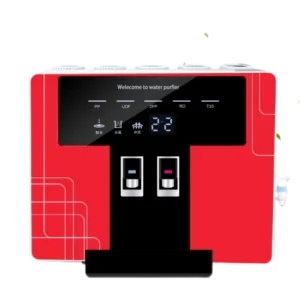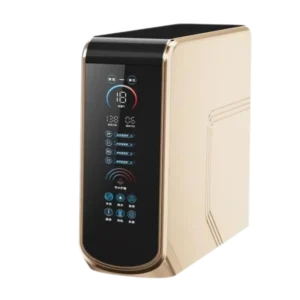Filter Purification Unveiled: In – Depth Analysis of the Principles of Water Purification
To truly understand how water purifiers work their magic in purifying water, an in – depth analysis
of the filter purification principles is necessary. The pre – filter, typically made of materials like PP cotton,
is the first stage in the purification process. Its fibers are arranged in a way that creates small gaps.

As water flows through the pre – filter, large particles such as sand, rust, and sediment get trapped
in these gaps. This mechanical filtration process is based on the principle of physical separation,
effectively removing visible impurities from the water.
of the filter purification principles is necessary. The pre – filter, typically made of materials like PP cotton,
is the first stage in the purification process. Its fibers are arranged in a way that creates small gaps.

As water flows through the pre – filter, large particles such as sand, rust, and sediment get trapped
in these gaps. This mechanical filtration process is based on the principle of physical separation,
effectively removing visible impurities from the water.
The activated carbon filter operates on the principle of adsorption. Activated carbon has a porous
structure with a large surface area. When water passes through the activated carbon filter, chemicals

such as chlorine, which is commonly used in water treatment but can have a negative impact on taste
and smell, are attracted to the surface of the activated carbon. The porous nature of the carbon allows
it to trap these chemicals within its pores through a process called adsorption. Organic pollutants also
follow a similar process of adsorption, effectively removing them from the water.
Water Purifier Factory, Water Purifier For Home, Water Purifier Machine,Water Purifier, Water Filter Purifier System
structure with a large surface area. When water passes through the activated carbon filter, chemicals

such as chlorine, which is commonly used in water treatment but can have a negative impact on taste
and smell, are attracted to the surface of the activated carbon. The porous nature of the carbon allows
it to trap these chemicals within its pores through a process called adsorption. Organic pollutants also
follow a similar process of adsorption, effectively removing them from the water.
Water Purifier Factory, Water Purifier For Home, Water Purifier Machine,Water Purifier, Water Filter Purifier System
For membrane filtration, the principle is based on size exclusion. Ultra – filtration membranes have pores
that are sized to allow water molecules and some small ions to pass through while blocking bacteria and
large – molecular – weight organic matter due to their larger size. Reverse osmosis membranes have even
smaller pores, which can reject viruses, dissolved salts, and heavy metals based on their size and charge,
achieving a high level of purification.
Filter Purification Unveiled: In – Depth Analysis of the Principles of Water Purification

that are sized to allow water molecules and some small ions to pass through while blocking bacteria and
large – molecular – weight organic matter due to their larger size. Reverse osmosis membranes have even
smaller pores, which can reject viruses, dissolved salts, and heavy metals based on their size and charge,
achieving a high level of purification.
Filter Purification Unveiled: In – Depth Analysis of the Principles of Water Purification

